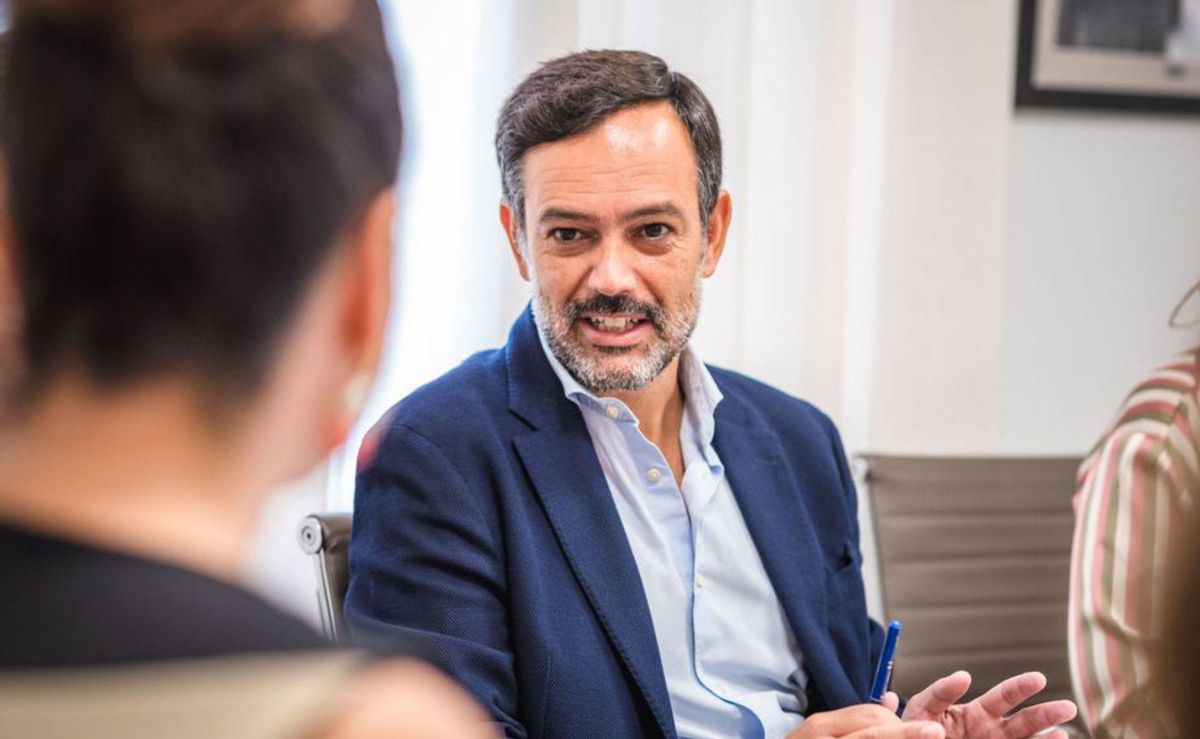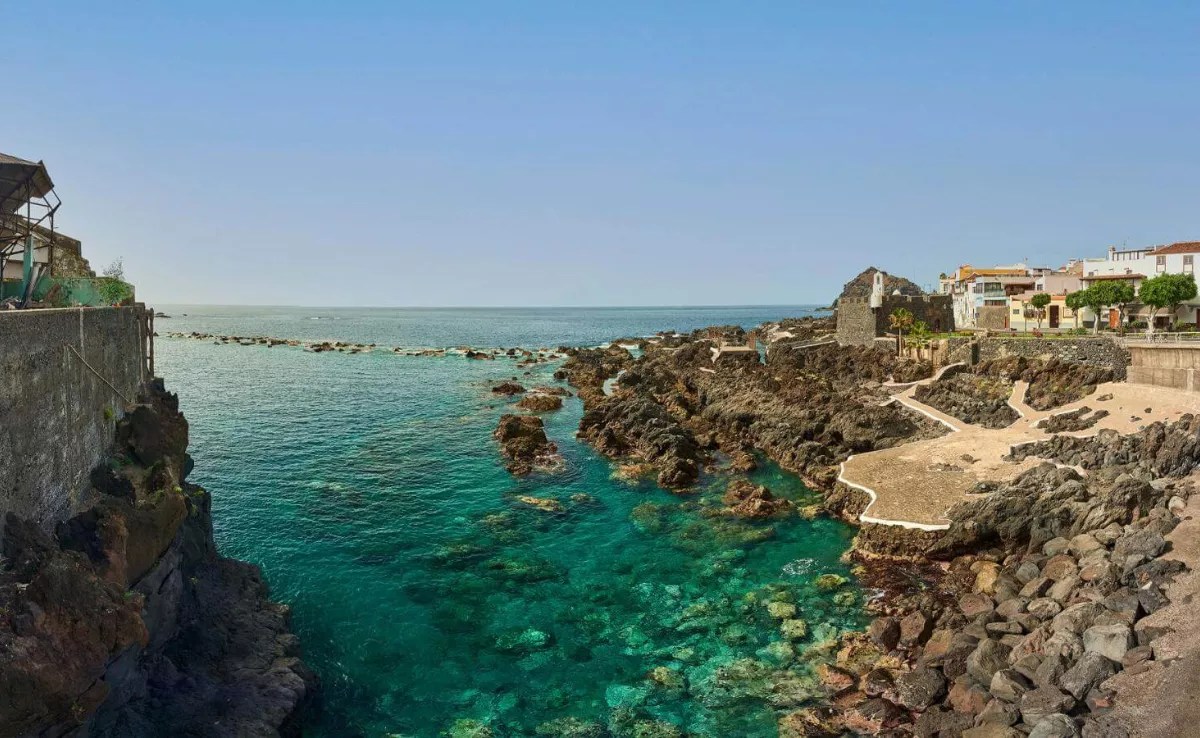“It is necessary to open the debate on the return of the original Guanche mummy discovered in the ravine of Erques (Arico), currently housed in the Archaeological Museum of Madrid, back to the Island. This is the moment and this is what the Tenerife Island Council will officially request from the state.”
The right moment mentioned by Lope Afonso has to do with the announcement made on January 22 in the Congress of Deputies by the Minister of Culture of the Spanish Government, Ernest Urtasun. In that presentation, he proposed a “process of reviewing collections to overcome a colonial framework or one anchored in gender or ethnocentric biases.” He recalled “international commitments assumed by Spain that translate into a review process” of the collections of state museums. Urtasun stated that this review process is already part of the temporary programming of some of them.
Precisely, in one of the galleries under state control, the National Archaeological Museum (MAN), has been exhibiting since 2015 the Guanche mummy from Tenerife, a xaxo – according to studies, the Guanche word – located in the Barranco de Erques and that the Island Council has been claiming since 1976. The request was reiterated in 1990, 2004, 2006, 2012, 2017, and 2021.
Reasons. Afonso reflects: “For the Island, it is a pride and a satisfaction that the National Archaeological Museum or any other institution of that caliber gives importance to everything related to our anthropology, history, and culture.” The vice president adds: “That’s why we are happy that a mummy specimen like the one popularly known as Jacinto is exhibited in Madrid”. However, he emphasises, “that does not mean that the original should not be here and we can show the many visitors to the Island that we have a past from the native world, the remnants of a unique culture.” The latter, he points out, “linked with the Castilian, later Spanish, and European to give rise to the society we are today.” Afonso insists that “we do not exclude keeping a replica or replicas in the National Archaeological Museum or any other space that wishes to receive them and where we think it would be convenient to exhibit them, but the original mummy must be in Tenerife.” He indicates that “we will communicate this in the coming days to the Museum’s own state body and to the Ministry of Culture through our island’s tourist adviser, José Carlos Acha”. He states that “if an agreement is reached, which I trust will be the case, it would be like a sort of exchange with the replica currently in the Museum of Nature and Archaeology (MUNA) – since November 2022”.

Lope Afonso, vice president of the Cabildo of Tenerife / E. D.
This center has the best collection of native remains from Canary Islands. Afonso concludes with this reasoning: “We do not want to create sterile discussions, but to raise a fair claim that the citizens of Tenerife deserve to achieve for all the time it has been away and for the fact that here the value that this mummy specimen has from a historical and cultural perspective can be provided.”
Failed attempts. The PP leader recalls that “it is not the first time and on previous occasions it was not successful due to lack of continuity and insistence or failure to target the right place”. He believes that there is also a sense of recovery of a theft of what was taken from the original location: “We expect support and institutional backing to reach the people of Tenerife so that they may understand its ethnographic importance and as a symbol.” He believes that “the return could be a turning point in that sense, as an opportunity to spread and disseminate everything related to the past and also the present”. In this regard, he emphasizes that “this example connects us with the vestiges of the way of life and the culture of the natives, with their evolution and merger after the conquest and the subsequent process of acculturation”. He explains: “Everything that ultimately relates to the evolution of Tenerife’s society.”
“We do not want to create sterile discussions, but to raise a fair claim”
[–>
Ideal space. Although not yet defined, Lope Afonso suggests that “the ideal space for its preservation after this hypothetical return would undoubtedly be the MUNA.” He also believes that this contribution to the inventory of the Tenerife museum “would reinforce the center’s promotional capability in itself, but would also have a beneficial effect on society and the institution in particular.”
Origins. The Guanche mummy of the National Archaeological Museum comes from the ravine of Erques, located between Güímar and Fasnia. It is believed to have belonged to the large sepulchral cave where hundreds were found in the last third of the 18th century. It was specifically found in 1763 and then transferred to the court of the then king of Spain, Carlos III. It holds particular archaeological value, as it perfectly reflects the Guanche mummification method, as well as the physical characteristics of the natives of Tenerife.
«It’s the perfect moment to reiterate our request for the return of a symbol»
[
Restitution. The Cabildo of Tenerife already stated in 2022 that “there is no justification for the Guanche mummy in Madrid not being returned to the Island”. Conrado Rodríguez-Maffiotte, director of MUNA, comments that if at the beginning of this century – 2003 – two mummies were transferred, one man and one woman, from Necochea (Argentina) and in 2011 the same was done from the Complutense University without problems, “obviously the reasons cannot be technical”. Rodríguez-Mafiotte believes that the real reason for opposing the transfer is that it is the best-preserved Guanche mummy that exists and I believe it is of all that have existed”. In October 2013, the Cabildo claimed, on the occasion of the tenth anniversary of the restitution of the mummies from Argentina, that “it will continue to claim and will not give up the fight for Tenerife to achieve the return of scattered Guanche remains”.
[
Dispersion. There are documented Guanche mummies exiled in at least ten institutions around the world. There is evidence of these mummified remains of Tenerife origin at the University of Havana (Cuba); McGill University in Canada; Cambridge University in England; and Göttingen University in Germany; at the Musée de l’Homme in Paris and at the Kunstkámera Museum in St. Petersburg, Russia. “They must be here, where they came from, because they explain culture, context, and history,” Rodríguez summarizes. Lope Afonso concludes: “We have been waiting for this for a long time and we do not want to wait any longer. It is the moment and if it is going to be done in other territories, also in ours”.
[
The characteristics of a unique mummy
An adult man
The mummy is dated between 1154 and 1260 and is an adult man who is 850 years old. Studies from 2015, when it was transferred to the MAN, shed light on who this individual was and the intricacies of the process used by the Guanches to preserve the corpses, which they called mirlado. The scientific work revealed that the man died between 35 and 40 years old, was 1.62 meters tall, had all his teeth preserved – without wear or cavities -, Negroid features, and hands that do not reveal hard physical work. From the condition of his teeth (indicating good nutrition), his hands, and the fact that he underwent a process of very high-quality mummification, researchers infer that he was a man of prominent status in his society.
From museum to museum
This mummy, popularly known as Jacinto, was a gift to King Carlos III. It went through the Museum of Antiquities of the Royal Library (1766); the Royal Cabinet of Natural History (1771, later renamed the Museum of Natural Sciences, 1815); the National Museum of Anthropology (1910), and the Canary Islands Room of the National Archaeological Museum (2015), where it still remains “somewhat out of reach”. It was even taken to the Universal Exhibition of Paris in 1878.
Next to the ‘giant’
The Erques mummy occupied a Room in the Museum of Anthropology among sculptures of a couple of Hottentots – an African ethnic group – or a curious skeleton of the so-called Extremaduran giant, a man native to Badajoz who reached a height of 2.35 meters and made a living in a circus. On one side, lonely and out of context, with a short sign.
“`
















